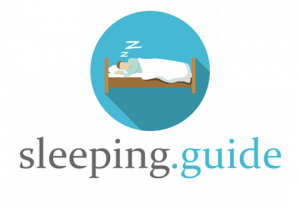Blankets are an excellent source to keep our bodies warm and comfy. Not only do they give protection from the cold outside, but they also help in providing a sense of security through the pressing layer. They have got so many benefits to provide but have got a fair share of concerns too.
I am unsure if this one is a concern or a benefit, but people often question to what extent can a blanket raise body temperature. May this is a concern for some people and a solution for others.
The blankets raise the body’s temperature, which is no news to anybody. Blankets do have the tendency to increase the body temperature, approximately up to 103 degrees F. This is why the person lying under it feels warm and comfortable even when the outside world is freezing.
The following article is going to be an elaborative discussion of how many degrees can a blanket raise body temperature.
So, let’s start!

How Many Degrees Can a Blanket Raise Body Temperature?
The body temperature raises by 103 to 104 degrees Fahrenheit by covering ourselves in a blanket.
Of course, this raise depends on the weather condition and other factors like current body temperature, age, gender, weight of the person, and thickness of the blanket.
There’s not much science involved in realizing that all different aspects work differently for different individuals.
Also, the time of the day matters too. The blanket raises the inner temperature by 3 degrees Fahrenheit and increases the temperature of the body. That increase is not limited to a certain number.
Check out this video for more validation.
Effects of Blankets on Body Temperature
Blankets sure are helping in many ways. They provide a warm and cozy atmosphere along with a sense of security in times of depression.
It’s true that the blankets raise the body temperature, and it has its effects, both beneficial and harmful.
The following table is to distinguish both effects:
| Beneficial Effects | Harmful Effects |
| Stops the shivers caused by fever. | Suffocate in even slightly warm weather. |
| Stops the shivers causes by fever. | Increase the temperature in case of fever. |
| Provides a cozy atmosphere. | Accelerates normal fever to high. |
| Gives a layer of security from harm to the outside world. |
People with better metabolism will experience lesser harmful effects than people with poor metabolism.
Also, if you feel that you have a fever suddenly, know that the average body temperature is 98 degrees Fahrenheit, and covering the body with the blanket can easily raise the bar by 2 degrees.
So, it may not be actually a fever but just a temporary raise in temperature.

Blanket Avoiding Situations
Blankets may seem harmful, and they’re to some level, but using them appropriately and responsibly is the best practice one must follow. In certain situations, using a blanket while sleeping can do more harm than good. Examples of such situations are:
- Using blankets near candles, flames, bonfires, and heaters can turn out to be very harmful and fire hazardous. A single flame particle is alone enough around a blanket to destroy a whole house if not taken care of immediately.
- Wearing a blanket in a saturated environment with very little ventilation can cause suffocation and raise the temperature of the body, which can make the individual feverish. Or worse, give a heatstroke.
- Using blankets near a baby aged between 1 month to 1 year can be extremely problematic as it can lead to infant death syndrome.
- The market is full of different kinds of blankets. Ranging from normally traditional blankets to weighted blankets to electronic blankets. The variety of materials used in its manufacturing is not definite. If an individual is allergic to the material that is used in the manufacturing of a blanket can be worrisome.
- People with breathing problems should absolutely avoid using blankets, especially weighted ones. I understand how they are great for people who are in stress and depression, but they’re not suited for people with Obstructive Sleep Apnea.
- Patients suffering from low blood pressure and low blood sugar must also avoid using blankets because they raise the body temperature, which can be life-threatening.
- Using a blanket is not harmful. However, using the wrong kind of material at the wrong time can be harmful or even hazardous.

Frequently Asked Questions (FAQs)
People are curious about anything they want to use or are using in their daily life. The following are some frequently asked questions that will help the readers use blankets safely:
Can blankets increase body temperature?
A blanket can increase the body temperature, depending on the room temperature and some other factors.
The body temperature can increase by 2 to 3 degrees Fahrenheit under a blanket. So, if your body temperature is normal, which is 98 degrees Fahrenheit, it can reach 100 to 101 degrees Fahrenheit.
Can fever be higher under blankets?
The fever can be higher and can still go up under the blanket.
If you ever have a fever and you have covered yourself with a blanket, put it aside, and you’ll evidently see the temperature dropping.
In case you have shivers and you’re feeling cold, wear a light blanket or remove your blanket from your head and feet. This tip has helped me load over the years.
Can heavy blankets cause fever?
Blankets cannot cause fever. They can not be the reason behind you having a fever. However, if you already have a fever, a blanket, especially a heavy one, will aid in increasing the temperature.
As a weighted blanket stops air regulation inside the blanket, the temperature inside increases, and so does the body temperature.
No matter how great weighted blankets are in times of depression and anxiety, they are not helpful when you have a fever.
Conclusion
- Body temperature increases when a person lies under a blanket.
- The temperature can increase by 2 to 3 degrees Fahrenheit and can reach 103 to 104 degrees Fahrenheit.
- It’s recommended not to sleep under the blanket when it’s warm outside, someone has breathing issues, has low blood pressure or blood sugar, or is near the fireplace.
- A blanket doesn’t decrease the fever. Rather, it raises the temperature.
- In times when you have a fever and are shivering, remove a blanket from your head and feet to feel the warmth without increasing the temperature of your body.
